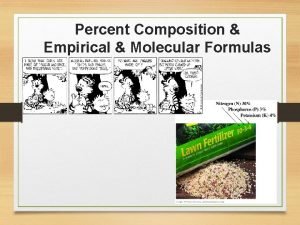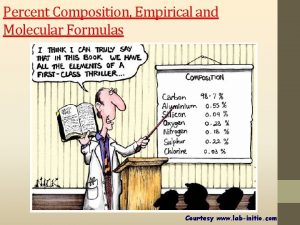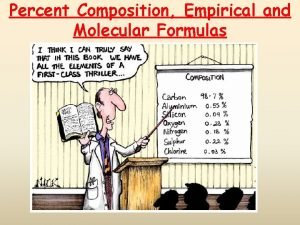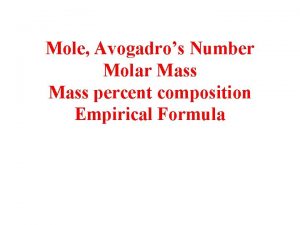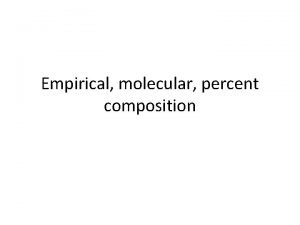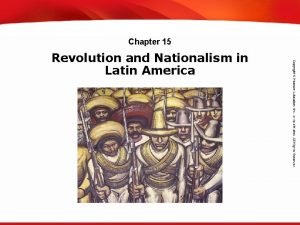TEKS 8 C Calculate percent composition and empirical










- Slides: 10

TEKS 8 C: Calculate percent composition and empirical and molecular formulas. Interwar Social Change

TEKS 8 C: Calculate percent composition and empirical and molecular formulas. What changes did Western society and culture experience after World War I? Society and culture were shaken by the experience of the war. This reaction occurred in Europe, the United States, and many other parts of the world. In science, discoveries changed what people understood. These shifts were mirrored in music, literature, and the fine arts. The world had changed, and the culture that existed before World War I no longer seemed to fit this new world.

TEKS 8 C: Calculate percent composition and empirical and molecular formulas. During the 1920 s, new technologies changed the way people lived in the world. These included: • Affordable cars • Improved telephones • Motion pictures • Radio • Labor-saving devices such as washing machines and vacuum cleaners These advances helped create a mass culture.

TEKS 8 C: Calculate percent composition and empirical and molecular formulas. Jazz emerged in the United States in the 1920 s. • This new form of music combined Western harmonies with African rhythms. • Nightclubs and the sounds of jazz became symbols of freedom. • Jazz attracted young people who rejected Victorian values. The 1920 s became known as the Jazz Age.

TEKS 8 C: Calculate percent composition and empirical and molecular formulas. Women enjoyed new opportunities. French flappers model the new shorter skirts. • As a result of their war work, women in many Western nations won the right to vote. • More woman worked outside the home and more careers opened up for women. • Labor-saving devices gave women more leisure time. • Flappers, who embraced jazz and new freedoms, became a symbol of rebellion against Victorian values.

TEKS 8 C: Calculate percent composition and empirical and molecular formulas. Some people reacted against new freedoms and ideas. Many Americans favored Prohibition. A constitutional amendment in 1919 banned alcohol. Under Prohibition, organized crime and speakeasies flourished. The amendment was repealed in 1933. A rising Christian fundamentalist movement supported traditional values and ideas about the Bible. John T. Scopes was convicted of breaking a Tennessee law that banned teaching Darwin’s theories about evolution.

TEKS 8 C: Calculate percent composition and empirical and molecular formulas. Postwar literature had a different focus than Victorian writings. • Wartime experiences led some authors to portray the modern world as spiritually barren. Writers such as Ernest Hemingway and F. Scott Fitzgerald were dubbed the “lost generation. ” • Writers such as James Joyce and Virginia Woolf experimented with “stream of consciousness, ” portraying the workings of the inner mind without imposing logic or order. • African American writers of the Harlem Renaissance expressed pride in their unique culture.

TEKS 8 C: Calculate percent composition and empirical and molecular formulas. New artistic movements rejected realistic representation of the world. • Abstract art focused on lines and colors rather than recognizable subjects. • Dadaism sought to upset traditional conventions by using shocking images. • Surrealism attempted to portray the inner workings of the mind. An abstract painting by Russian artist Vasily Kandinsky

TEKS 8 C: Calculate percent composition and empirical and molecular formulas. Scientific discoveries changed the world and challenged some long-held ideas. • Marie Curie, Albert Einstein, and Enrico Fermi increased understanding of the atom. Their work would later lead to the development of atomic energy and nuclear weapons. • Alexander Fleming discovered penicillin, the first antibiotic, which is used to combat many diseases. • Austrian psychologist Sigmund Freud introduced new theories about the unconscious mind. His use of psychoanalysis changed perceptions of the mind.

TEKS 8 C: Calculate percent composition and empirical and molecular formulas. The trauma of World War I propelled many people to change the way they thought and acted during the turbulent 1920 s. • Science, medicine, politics, art, music, and architecture drove this evolution. • At the end of the 1920 s, the “lost generation” would face a new crisis in the form of a worldwide economic depression.
 Percent composition of magnesium nitrate
Percent composition of magnesium nitrate Acetic acid percent composition
Acetic acid percent composition Empirical formula
Empirical formula Empirical and molecular formula
Empirical and molecular formula Empirical formula from percent composition
Empirical formula from percent composition How to get empirical formula from percentages
How to get empirical formula from percentages Empirical formula to percent composition
Empirical formula to percent composition Empirical formula from percent composition
Empirical formula from percent composition Mass percentage formula
Mass percentage formula Moles of water
Moles of water How to calculate percent composition
How to calculate percent composition

